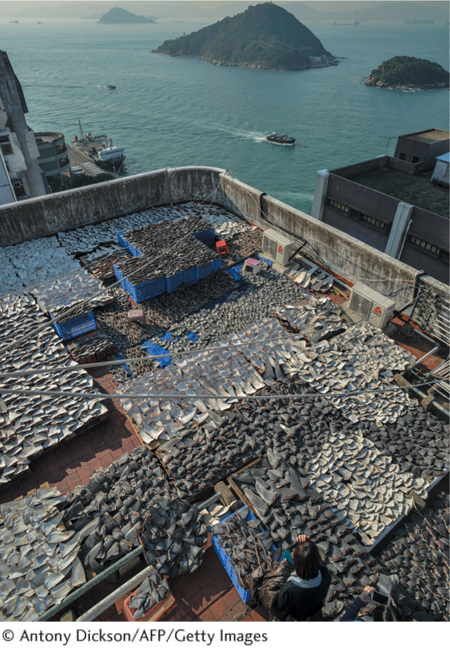10.4 Life in Open Waters
Describe the geographic patterns of life in the open ocean.
Because the oceans are so large and so deep, open-
pelagic
Relating to the open sea.
We begin with two geographic approaches to examining the open waters: (1) tracing the daily movements of organisms vertically through layers of the ocean and (2) following the periodic movements of organisms horizontally across the ocean’s surface.
Layers of Light: Daily Vertical Migrations
Much of the open ocean’s surface is a biological desert by day, but it is full of life at night, when organisms migrate upward from the safety of the dark depths to feed at the surface. These daily vertical migrations, or “commutes,” represent the largest synchronized animal movements on Earth. All types of organisms rise to the surface each night, including zooplankton, jellyfish, fish, and squid. Some organisms, such as jellyfish, take hours to reach the surface, spending more time in migrating than in feeding.
Many other organisms make a “reverse commute” to feed. In other words, they live at the lighted ocean surface but dive into the depths for their food (Figure 10.26).
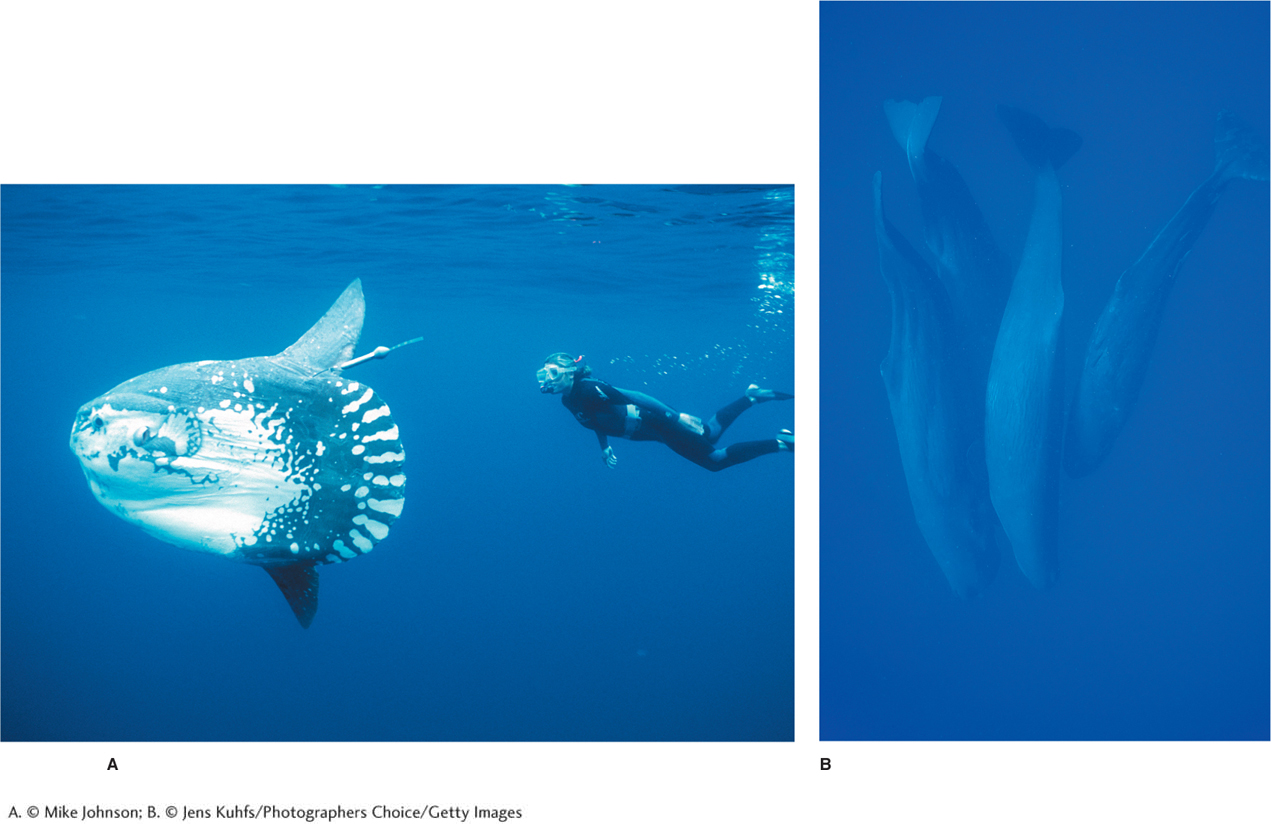
Trans-Ocean Migrations
During the last decade, thanks to new GPS tagging and tracking technology, scientists have begun to piece together where pelagic migratory organisms go. Scientists are using a variety of electronic tagging techniques on migratory species to reveal where they migrate, when they migrate, and why they migrate. Figure 10.27 traces the migrations of two species, the great white shark and the blue-
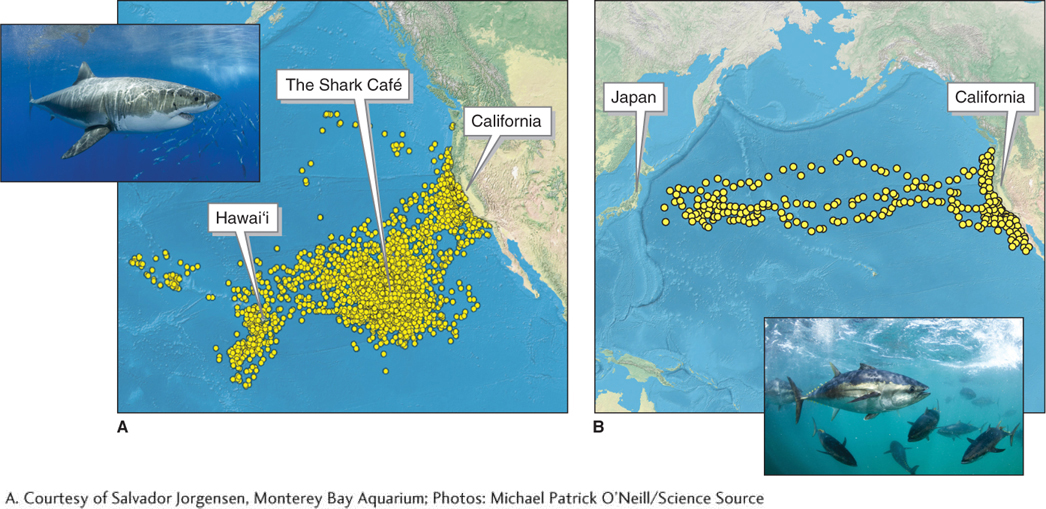
Life in the Deep
No sunlight reaches below the mesopelagic zone, which ends at a depth of 1,000 m (3,280 ft) (see Figure 10.6). Most of the open ocean is therefore pitch black and perpetually just above freezing. Pressures at these depths are extremely high because of the immense weight of water above.
There is, however, light at these depths. Ninety percent of organisms in the deep sea make their own light. Bioluminescence is the production of light through chemical means by living organisms. Bioluminescence has evolved independently among unrelated groups of deep-
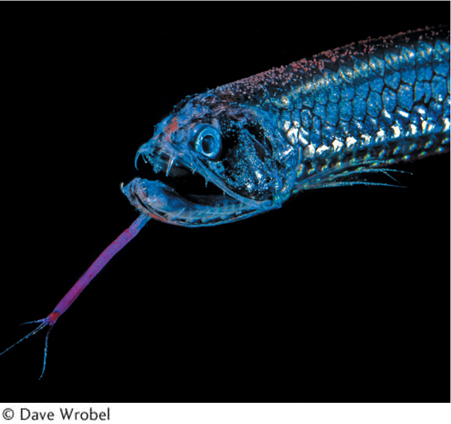
bioluminescence
The production of light through chemical means by living organisms.
Question 10.9
Why do most deep-
Deep-
Scientific study of life in the deep ocean is a particularly challenging endeavor. The tremendous pressures of the deep have created a formidable barrier to scientific investigation, and staffed missions are very expensive. Robotic submersibles and trawls, which are far less costly, have been among the most important sources of scientific information on deep-
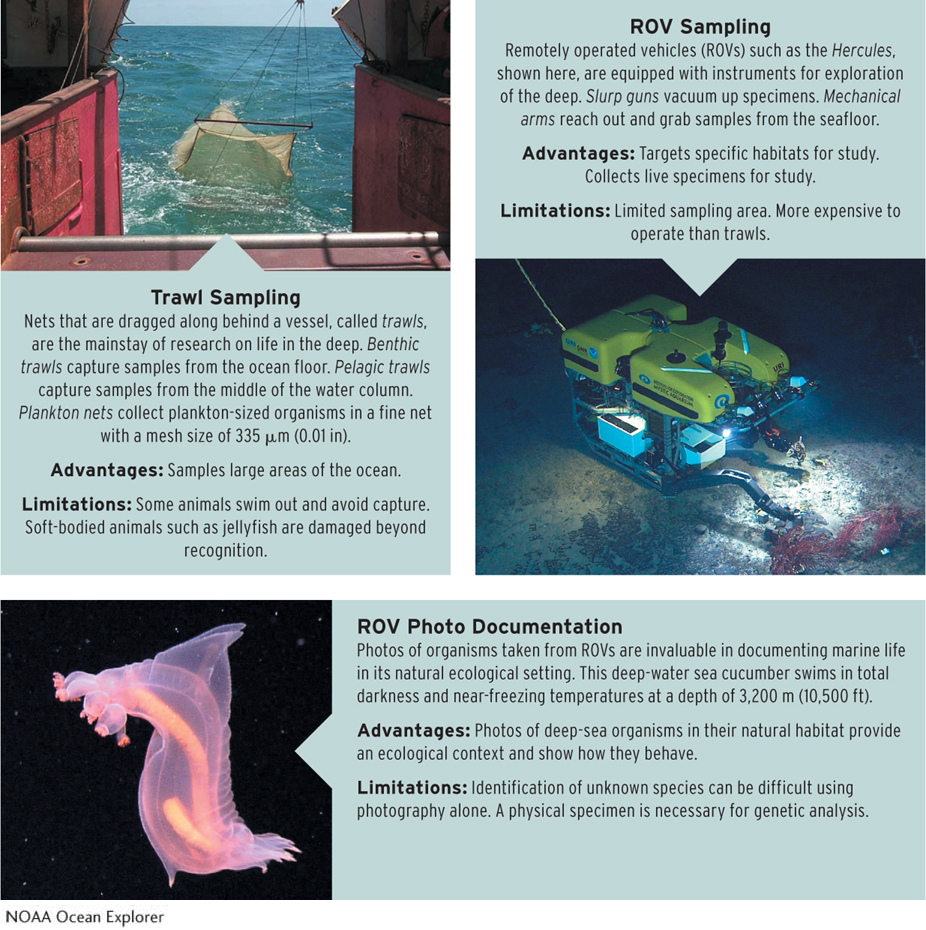
Biological Islands: Seamounts and Hydrothermal Vents
The abyssal plains are relative biological deserts. Rising from these plains are biological islands in the form of seamounts and hydrothermal vents. Collectively, seamount ecosystems are larger in area than any terrestrial biome. Together, they make up an area approximately the same size as the continent of South America. These ecosystems, however, are largely inaccessible to scientific study and barely understood by scientists (Figure 10.30).
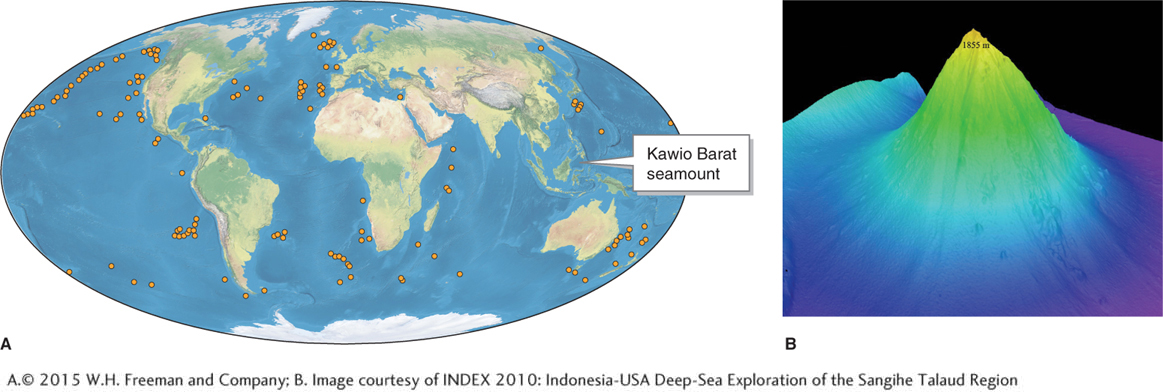
Like winds around a high mountain, ocean currents flow over and around large seamounts. These currents may accelerate and become turbulent, stirring up nutrients from the seafloor and bringing them to the sunlit surface. The nutrients stimulate phytoplankton blooms, which support other organisms. Many migratory species seek out and congregate above seamounts, including sharks, tuna, whales, and seabirds.
Like seamounts, hydrothermal vent communities are rich biological islands on the seafloor. Hydrothermal vent communities are unique ecosystems found at hydrothermal vents, volcanic hot springs that emit mineral-
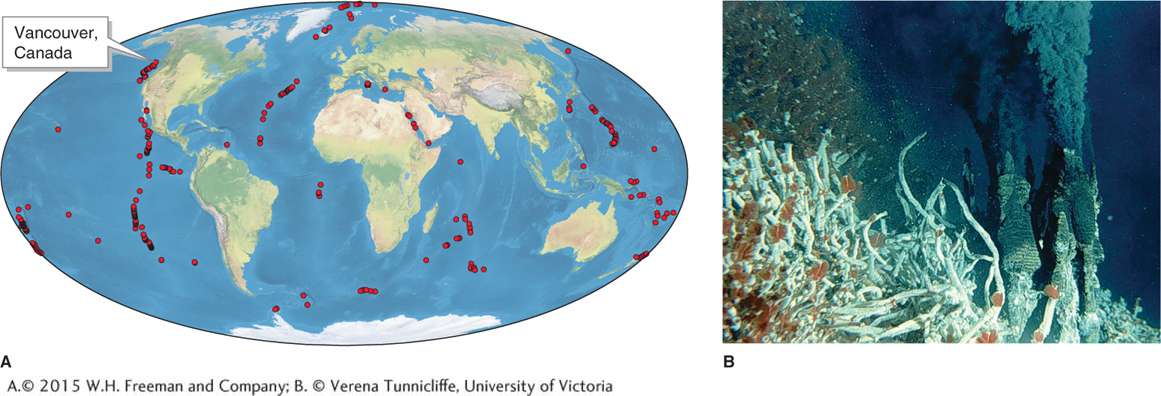
hydrothermal vent community
A unique ecosystem found at volcanic hot springs that emit mineral-
hydrothermal vent communities
Unique ecosystems found at volcanic hot springs that emit mineral-
Reaping the Bounty: Industrial Fishing
All marine ecosystems, whether on the continental margins or in the open ocean, support fisheries of one type or another. A fishery is a region where fish are caught for human consumption. The livelihoods of about a half billion people, mostly in economically developing countries, are dependent on small-
fishery
A region where fish are caught for human consumption.
Unsustainable fishing occurs when fish are taken out of a fishery faster than the population can reproduce, causing the fish population to decline. Due to unsustainable fishing, about 30% of the world’s fisheries have collapsed, defined here as being reduced to 10% of their former fish populations.
A growing human population, coupled with advances in industrial fishing technology in the last five decades, is to blame for global fishery declines. The global fish catch peaked in 1989 at 90 million tons and has since leveled off or declined. The decline is not due to conservation efforts—
Drift net fishing, trawling, longline fishing, and seining are four methods commonly employed in industrial fishing. Drift net fishing suspends large nets in the upper reaches of the ocean. Trawling drags nets through the water column or along the seafloor. Longline fishing employs thousands of baited hooks on lines up to 80 km (50 mi) in length. Seining encircles fish and traps them in a large net. These fishing methods invariably kill other marine species (Figure 10.32). Bycatch consists of unwanted organisms, such as birds and sea turtles, caught by industrial fishing methods. These organisms are usually thrown back to sea dead. Bycatch is a serious problem that threatens sea turtles, albatross, whales, dolphins, and many species of fish.
drift net fishing
An industrial fishing method in which large nets are suspended in the upper reaches of the ocean.
trawling
An industrial fishing method in which nets are dragged through the water column or along the seafloor.
longline fishing
An industrial fishing method that employs thousands of baited hooks on lines up to 80 km (50 mi) in length.
seining
An industrial fishing method that uses a large net to surround and catch fish.
bycatch
Unwanted organisms caught by industrial fishing methods, which are usually thrown back to sea dead.
Approximately one-
